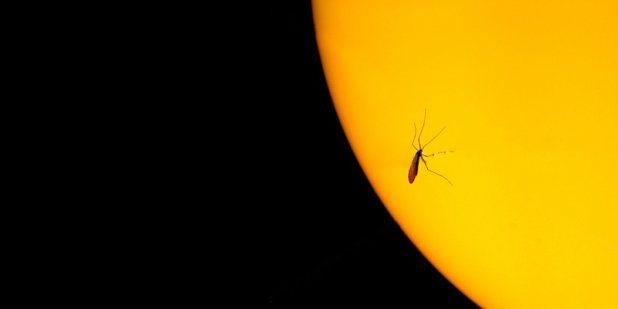- About
- Topics
- Picks
- Audio
- Story
- In-Depth
- Opinion
- News
- Donate
- Signup for our newsletterOur Editors' Best Picks.Send
Read, Debate: Engage.
Artemisinin, which is the central ingredient to all the treatments recommended by the World Health Organization WHO in the fight against malaria. Its production used to be difficult and little effective.
New methods to produce central ingredient for malaria treatments
Now however, artemisinin-based drugs (ACT; artemisinin-combination treatment) can be produced in a biotechnological and semi-synthetic way. With these new methods, massive price fluctuations could be stopped and the produced amount of artemisinin could be stabilized – that's at least what the pharmaceutical giant Sanofi promises. The french drugmaker has already opened a production plant for semi-synthetic artemisinin.
However, these new technological progresses have their downsides. They can be found in that very new, semi-synthetic production of artemisinic acid, the precursor of artemisinin, that Sanofi has now launched on a large scale. "The mere announcement that in the future artemisinic acid can be grown in the laboratories has let the market price of artemisinin to drop significantly," Dirk Pohlmann, Managing Director of Artemiflow GmbH, says.
Artemiflow is planning to open a first production facility for artemisinin in 2016 in one of the most affected countries. The company wants to use an innovative method for the production of artemisinin, which is different to Sanofi's precedure. It was developed by the German researcher Peter Seeberger from the Max Planck Institute of Colloids and Interfaces in Potsdam. (see "In search of a a cheaper remedy" in this dossier.)
"Because of Sanofi's announcement and the subsequent drop of market prices, loads of artemisinin extractors in the south have already collapsed and gone bankrupt", as Pohlmann of Artemiflow explains, "and thousands of small scale farmers have sorted out their cultivation of sweet wormwood, the plant that contains artemisinin, and switched to other crops."
Originally, it was intended that the new semi-synthetic method - which was massively supported by the Bill Gates Foundation – could help to reduce price volatility and stabilize production.
In the german headquarters of Sanofi in Frankfurt, spokesman Philipp Heinz shows understanding ot the concerns. "Our semi-synthetic artemisinin is not intended to replace the naturally grown plant production of artemisinin, but to add another production option. An additional source of high quality artemisinin can improve the artemisinin supply, ensuring stable prices and thus allowing a wider availability of artemisinin-based treatments for malaria patients." In fact, Sanofi has promised to produce no more than sixty tons of artemisinin per year synthetically and therefore not to displace any small scale producers.
More harm or good in practice?
Whether the intentions of the french pharmaceutical giant actually do more good than harm in practice remains unclear. Even Sanofi's announcement of 60 tons of artemisinin synthetically, about one-quarter of the annual global demand, has its effects: the market price of artemisinin already dropped to an all time low. What a sadly ironic twist to it, as it could in fact lead to a shortage of artemisinin, since a mass death of small scale artemisinin producers has already begun.
And there is yet another problem in providing cheaper medicine to fight malaria, as indicated by Oxfam, an anti-globalization and non-governmental watchdog. "It is not enough to provide malaria drugs in large quantities and at low prices, when there is nobody on site having sufficient knowledge and expertise", Nikolai Link, spokesman for Oxfam Germany, says.
Oxfam refers to a US study, after which about sixty percent of all fevers are not malaria in Africa, but are treated – due to a lack of medical knowledge – using anti-malaria drugs.
Such treatment failures do not only lead to a worsening of the clinical pictures of those affected, but may also support an increased development of resistance of the malaria parasite. In the african context, where about ninety percent of malaria patients occur, a widespread resistance to artemisinin-based drugs would come as an unprecedented catastrophy.
In the long term, the fight against malaria can not be won even with artemisinin-based drugs. The malaria parasite in millions of years of evolution has developed to a kind of a "matching world champion" in order to evade and confuse the human immune system.
In its current malaria report, WHO confirms that pathogen resistance to artemisinin had already occured in some countries of Southeast Asia.
Therefore it seems as if the pathogen's development of resistance to artemisinin is a process that can only be slowed down, but can not be prevented. The development of new, innovative drugs thus is still required, at least as long as the urgently needed vaccine is not available.
